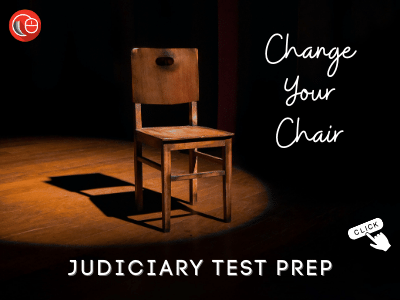This article has been written by Oishika Banerji of Amity Law School, Kolkata. This article provides a detailed analysis of joint liability under the Indian Penal Code, 1860.
This article has been published by Sneha Mahawar.
Table of Contents
Introduction
A person who genuinely commits a crime is usually held legally accountable for their actions and punished accordingly. The criminal responsibility concept states that the individual who commits an offence is liable and may alone be declared guilty. However, Sections 34 and 149 of the Indian Penal Code, 1860, create an exception to the norm, placing criminal culpability on the culprit and their associates who collaborated in the commission of the crime in support of a common intention or prosecution of a common aim. Each of them becomes jointly accountable in such a scenario. The Supreme Court of India had viewed the same in the notable case of Ramesh Singh alias Photti v. State of Andhra Pradesh (2004). This article provides a detailed analysis of the concept of joint liability under the Indian Penal Code, 1860.

Scope of joint liability under Section 34 of the Indian Penal Code, 1860
Section 34 of the Indian Penal Code, 1860 lays down the provision for joint liability in cases where different persons share a common intention. Section 34 reads as, “acts done by several persons in furtherance of common intention”. In order to understand the term ‘act’ in this context, a look into its preceding section needs to be made. Section 33 defines the term ‘act’ and ‘omission’.
Relation between Sections 33 and 34
Sections 33 and 34 make it clear that the word “criminal act” refers to more than a single act and encompasses a sequence of acts carried out in rapid succession and intertwined in such a way that they cannot be distinguished from one another, with various motives imputed to successive acts. When seen in this light, it is evident that the sections are meant to address situations in which it is impossible to discern between the unlawful conduct of individual members of a group who all act in support of a common goal. The Supreme Court of India while deciding in the case of Shri Ganesh v. State of Mysore (1958), had observed that Section 34 codifies the common-sense notion that if two or more people do anything together, it is the same as if they did it separately. Therefore, the three main elements that constitute Section 34 are as follows:
- A criminal act must be done by several persons.
- The unlawful conduct must serve to enhance everyone’s shared intention.
- All people must take part in achieving the shared intention.
These three elements guide a court in assessing whether or not the person accused in front of it is jointly accountable with others. While the first two aspects pertaining to the activities that are attributable to the accused and must be shown as such, the third element refers to the consequences of such actions. The Apex Court’s view in the case of Shyamal Ghosh v. State of West Bengal (2012) stated that once the criminal conduct and common purpose have been established, the rule of constructive culpability enshrined in Section 34 of the Indian Penal Code kicks in. It must be proven that a person has done something with others before he may be held accountable to others. Every member of the group charged with Section 34 assistance is required to take part in the criminal conduct.
Barendra Kumar Ghosh v. King Emperor (1925)
The case of Barendra Kumar Ghosh v. King Emperor (1925) was one of the early cases where the scope of Section 34 of the Indian Penal Code, 1860 was taken into consideration by Lord Sumner of the Privy Council. In this case, the accused had appeared before the Privy Council after his conviction for murder under Section 302 read with Section 34 of the 1860 Code was upheld by the Calcutta High Court. The appeal was dismissed as the Privy Council made the following observation.
Section 34 deals with the commission of separate acts, similar or diverse, by several persons; if all are done in furtherance of a common intention, each person is liable for the result of all as if he had done them himself; for ‘the act’ and ‘that act’ in the latter part of the section must include the entire action covered by a criminal act ‘in the first part’ because they refer to it. In other terms, a ‘criminal act’ is a collection of criminal acts that culminate in something that an individual would be responsible for, if it were all done by himself, i.e., a criminal offence.
Common intention in light of the Indian judiciary
The Supreme Court of India while deciding on the case of Goudappa v. State of Karnataka (2013) had observed that it is a common sense premise that if numerous people are accused of committing criminal conduct, all such individuals are likely to have actively provided encouragement, assistance, protection, and support, as well as actively participated or otherwise engaged in the illegal act itself. Thus, even though a specific act was performed by an individual, if there was a common intention and they all participated in support of that intention, they are all held accountable for the offence committed.
The top court’s view in the 1977 case of Ashok Kumar v. State of Punjab was that the purposeful joint criminal act by multiple individuals in furtherance of a common intention is the essence of joint culpability under Section 34. Thus, the essential is the simultaneous agreement of the minds of all involved in the unlawful conduct to achieve a certain objective.
While delivering the judgment in the case of State of Uttar Pradesh v. Rohan Singh (1994), the Supreme Court had noted that the terms “common intention” and “same or similar intention” are not interchangeable. Not only will responsibility alter depending on the nature of the purpose, but so will the character of the conviction and punishment to be handed down. Only when the accused have a “shared intention”, not whether they have a “similar intention”, may Section 34 be employed.
The decision made by the Apex Court in the 2011 case of Nand Kishore v. State of Madhya Pradesh made it clear that mens rea, as defined in criminal law, is distinct from common intention. Although the common intention may be incidental or ancillary to mens rea, both are different from each other.
Joint liability and free fight : an established relation
One of the most challenging parts of joint liability law is determining the liability of various members of a group of persons separated into mutually antagonistic or hostile groupings, especially when there is a free fight between them. This is because, in addition to determining the exact involvement of each individual member of the attacking party, the court must also determine if common intention can be proved. The concept of joint liability in the context of the free fight can be understood with reference to the case of Balaur Singh And Others Etc. Etc. vs State Of Punjab And Others (1995). Although the trial court as well as the high court in this case concluded that there was a free fight and therefore each and every individual will be held responsible and guilty of the act committed, the Supreme Court differed from this conclusion. The Court held that in a free fight, the victims and assailants, who are themselves participants or expected participants in the cross assault on each other, it will be difficult to attribute to one of the defendants the intent to cause injuries severe enough to result in death. As a result, the conviction was changed from Section 302 to Section 304 (II), and the punishment was reduced from life to seven years of imprisonment.
Section 34 vis a vis Section 149 of the Indian Penal Code, 1860
Common intention under Section 34 is the foundation of culpability, whereas a common object is the basis of liability in Section 149. Section 34 does not define common intention and is thus unrestricted, but the common object is specified in Section 149 and is confined to the five unlawful objects listed in Section 141 of the Code. Acts under Section 34 must be carried out with a single purpose, but criminal acts under Section 149 must be carried out with a common object. Section 34 requires active engagement, no matter how minor or inconsequential but Section 149, however, simply being a member of an unlawful assembly is enough to bring criminal charges.
The consequence of incorrectly prosecuting a person under Section 149 IPC and afterwards substituting Section 34 does not fatally impair the prosecution case, since the replacement must be regarded to be a formal issue and does not fundamentally affect the prosecution case unless prejudice is given to the accused. This was held in Amar Singh v. State of Haryana (1973), where the conviction for an offence under Section 302 read with Section 34, despite the fact that the accused was charged under Section 302 read with Section 149, was not illegal because the facts proved and evidence adduced would have been the same if the accused had been charged under Section 302 read with Section 34 of the Indian Penal Code, 1860.
Landmark judgments
Courts have time and again interpreted the legislative intent behind Section 34 of the Indian Penal Code, 1860, in order to break down the provision in simple terms. A list of three cases in recent times has been discussed hereunder, focusing specifically on the ratio decidendi of the same.
Chhota Ahirwar v. the State of Madhya Pradesh (2011)
A bench of Justices Indira Banerjee and S. Ravindra Bhat of the Supreme Court of India while discussing the case of Chhota Ahirwar v. The State of Madhya Pradesh (2011), made the following observations:
- Only the individual who really commits the crime can be found guilty and sentenced in line with the law, according to established criminal law principles. Section 34 is the only provision that establishes a principle of shared accountability in criminal conduct, the core of which is found in the presence of a common intention, inciting the primary accused to do the criminal act in pursuit of that goal.
- Even when different acts are performed by two or more people in the service of a shared goal, each individual is responsible for the outcome of all the acts as if they were all performed by all of these people. Section 34 is only a rule of evidence that applies the idea of shared criminal culpability, but it does not constitute a separate, substantive offence.
- Acting in cooperation is what common intention entails. The existence of a planned plot must be shown either by the accused’s actions, circumstances, or any other damning information. It is insufficient to share the same intention independently of one another.
Nagendran (M.25/16) v. State (2018)
Section 34 of the IPC is not a substantive or separate offence. It is a rule of evidence that establishes vicarious, constructive, and joint culpability and so establishes the norm for criminal conduct committed by a group of people. It establishes a legal exception to the general rule. This has been observed by the Madras High Court in the well-known case of Nagendran (M.25/16) vs State (2018).
The Court went further to state that the presence of the element of involvement in the crime, rather than a specific overt act, is needed of an accused to draw Section 34. This type of engagement might be construed as facilitation, help, or assistance. The presence of an accused is essential in an act involving bodily harm or violence to attract Section 34 IPC. It would be sufficient to simply be present, even if there was no physical activity. To put it another way, such a presence would imply active engagement. As a result, depending on the circumstances, involvement might be active or passive. The behaviour during the course of the action or at the moment of the last act might be used to determine the previous concert. Even if it is feasible to believe in the reality of a meeting of minds on the spur of the moment, it should be shown. Evidence must be seen as a whole in order to attract Section 34 and thus there is no requirement for first-hand evidence.
Asif Khan v. State of Maharashtra & Anr. (2019)
A bench of Justices K Joseph and A Bhushan had laid down the purpose behind invoking Section 34 of the Indian Penal Code, 1860 while deciding on the case of Asif Khan v. State of Maharashtra & Anr. (2019).
The Court clarified that Section 34 does not say “the common intentions of all” nor does it say “an intention common to all ”. The heart of the culpability, according to the provision, is found in the existence of a common intention energising the accused, which leads to the commission of a criminal act in pursuit of that intention. To successfully invoke Section 34, it must be demonstrated that the criminal act complained of was committed by one of the accused persons in furtherance of the common intention of all; if this is demonstrated, liability for the crime may be imposed on any one of the accused persons in the same manner as if the act had been committed by him alone.
This being the case, it was clear to the Court that common intention within the meaning of the aforementioned section implies a pre-arranged plan, and that in order to convict the accused of an offence under the section, it must be proven that the criminal act was committed in concert pursuant to the pre-arranged plan. As has frequently been stated, obtaining direct evidence to show an individual’s purpose is difficult, if not impossible; in most situations, it must be inferred from his act or behaviour or other pertinent circumstances of the case.
Conclusion
Section 34 of the Indian Penal Code, 1860 expresses the concept of joint culpability. This provision just clarifies the notion of shared culpability and does not impose any penalties. This section must be read in conjunction with other provisions of the Code, such as Section 120A, which defines criminal conspiracy, Section 120 B, which provides penalty for criminal conspiracy and Section 149, which deals with unlawful assembly. Section 34 is ineffective on its own, it must therefore be combined with other provisions to render a person jointly accountable for an offence. The idea of joint criminal liability looks to be more of a magical weapon in criminal prosecution. However, the theory not only adds to conceptual ambiguity and clashes with several basic criminal law concepts, but it also goes after the customary scope of command responsibility liability. This is comprehensible if both concepts are used at the same time in instances involving the accused in a superior position.
References
- http://www.legalservicesindia.com/article/1343/Scope-of-Imposing-Joint-Liability-under-Indian-Penal-Code.html#:~:text=The%20concept%20of%20joint%20 liability%20games%20under%20Section%2034%20of,as%20when%20two%20or%20more
- https://www.legalserviceindia.com/legal/article-3415-joint-and-constructive-criminal-liability.html
- https://www.jstor.org/stable/24863966
- https://thelegalvidya.com/joint-liability-under-indian-penal-code/
Students of Lawsikho courses regularly produce writing assignments and work on practical exercises as a part of their coursework and develop themselves in real-life practical skills.
LawSikho has created a telegram group for exchanging legal knowledge, referrals, and various opportunities. You can click on this link and join:
Follow us on Instagram and subscribe to our YouTube channel for more amazing legal content.
 Serato DJ Crack 2025Serato DJ PRO Crack
Serato DJ Crack 2025Serato DJ PRO Crack












 Allow notifications
Allow notifications



